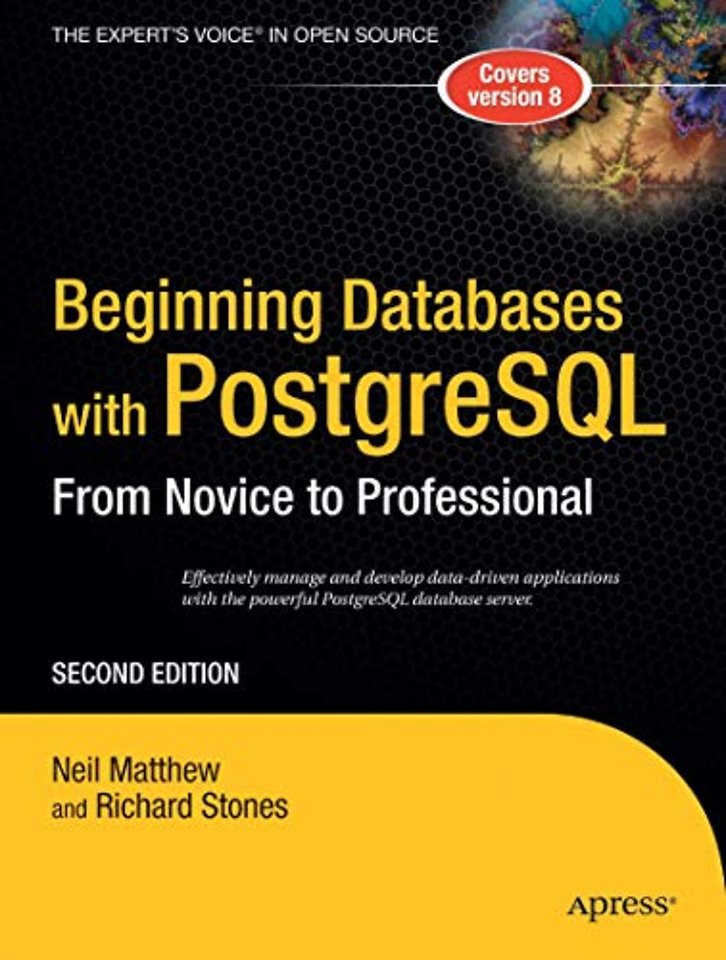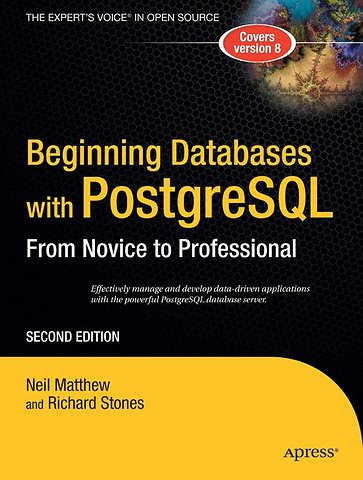


Rick Stones programming at school, more years ago than he cares to remember, on a 6502-powered BBC micro, which with the help of a few spare parts continued to function for the next 15 years.
Meer over de auteursBeginning Databases with PostgreSQL
From Novice to Professional
Samenvatting
PostgreSQL is arguably the most powerful open-source relational database system. It has grown from academic research beginnings into a functionally-rich, standards-compliant, and enterprise-ready database used by organizations all over the world. And it’s completely free to use.
Beginning Databases with PostgreSQL offers readers a thorough overview of database basics, starting with an explanation of why you might need to use a database, and following with a summary of what different database types have to offer when compared to alternatives like spreadsheets. You’ll also learn all about relational database design topics such as the SQL query language, and introduce core principles including normalization and referential integrity.
The book continues with a complete tutorial on PostgreSQL features and functions and include information on database construction and administration. Key features such as transactions, stored procedures and triggers are covered, along with many of the capabilities new to version 8. To help you get started quickly, step-by-step instructions on installing PostgreSQL on Windows and Linux/UNIX systems are included.
In the remainder of the book, we show you how to make the most of PostgreSQL features in your own applications using a wide range of programming languages, including C, Perl, PHP, Java and C#. Many example programs are presented in the book, and all are available for download from the Apress web site.
By the end of the book you will be able to install, use, and effectively manage a PostgreSQL server, design and implement a database, and create and deploy your own database applications.
Specificaties
Over Neil Matthew
Anderen die dit boek kochten, kochten ook
Net verschenen
Rubrieken
- aanbestedingsrecht
- aansprakelijkheids- en verzekeringsrecht
- accountancy
- algemeen juridisch
- arbeidsrecht
- bank- en effectenrecht
- bestuursrecht
- bouwrecht
- burgerlijk recht en procesrecht
- europees-internationaal recht
- fiscaal recht
- gezondheidsrecht
- insolventierecht
- intellectuele eigendom en ict-recht
- management
- mens en maatschappij
- milieu- en omgevingsrecht
- notarieel recht
- ondernemingsrecht
- pensioenrecht
- personen- en familierecht
- sociale zekerheidsrecht
- staatsrecht
- strafrecht en criminologie
- vastgoed- en huurrecht
- vreemdelingenrecht





